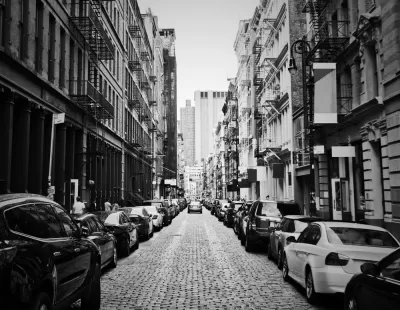A recent article takes a controversial stance contrary to the argument of Jane Jacobs that old buildings equal affordable, diverse neighborhoods.

Emily Washington begins the article by referencing the current debate about whether the historic preservation tax credit will survive tax reform efforts, tentatively scheduled for 2015. Acknowledging the arguments of preservationists exemplified by Jane Jacobs, who famously argued that old buildings are an essential part of an "vigorous" city, Washington makes a dissenting claim:
However, both Jacobs and preservationists today fail to acknowledge that the cities and neighborhoods where preservation is strongest have uniformly high rents and low diversity because preservation efforts have led to insufficient building supply. Jacobs contrasted preservation with government-led urban renewal efforts relying on eminent domain to raze and reconstruct entire blocks and neighborhoods. She correctly points out that the resulting new construction would be more expensive than protecting old buildings from eminent domain. But this is a false dichotomy.
Washington's argument is that historic preservation policies have led to increased costs in neighborhoods like New York’s Greenwich Village and Boston’s North End, which are now so expensive as to be far from the ideals espoused by Jacobs.
FULL STORY: Historic preservation: Bad for neighborhood diversity

Study: Maui’s Plan to Convert Vacation Rentals to Long-Term Housing Could Cause Nearly $1 Billion Economic Loss
The plan would reduce visitor accommodation by 25,% resulting in 1,900 jobs lost.

North Texas Transit Leaders Tout Benefits of TOD for Growing Region
At a summit focused on transit-oriented development, policymakers discussed how North Texas’ expanded light rail system can serve as a tool for economic growth.

Why Should We Subsidize Public Transportation?
Many public transit agencies face financial stress due to rising costs, declining fare revenue, and declining subsidies. Transit advocates must provide a strong business case for increasing public transit funding.

How to Make US Trains Faster
Changes to boarding platforms and a switch to electric trains could improve U.S. passenger rail service without the added cost of high-speed rail.

Columbia’s Revitalized ‘Loop’ Is a Hub for Local Entrepreneurs
A focus on small businesses is helping a commercial corridor in Columbia, Missouri thrive.

Invasive Insect Threatens Minnesota’s Ash Forests
The Emerald Ash Borer is a rapidly spreading invasive pest threatening Minnesota’s ash trees, and homeowners are encouraged to plant diverse replacement species, avoid moving ash firewood, and monitor for signs of infestation.
Urban Design for Planners 1: Software Tools
This six-course series explores essential urban design concepts using open source software and equips planners with the tools they need to participate fully in the urban design process.
Planning for Universal Design
Learn the tools for implementing Universal Design in planning regulations.
Ascent Environmental
Borough of Carlisle
Institute for Housing and Urban Development Studies (IHS)
City of Grandview
Harvard GSD Executive Education
Toledo-Lucas County Plan Commissions
Salt Lake City
NYU Wagner Graduate School of Public Service




























